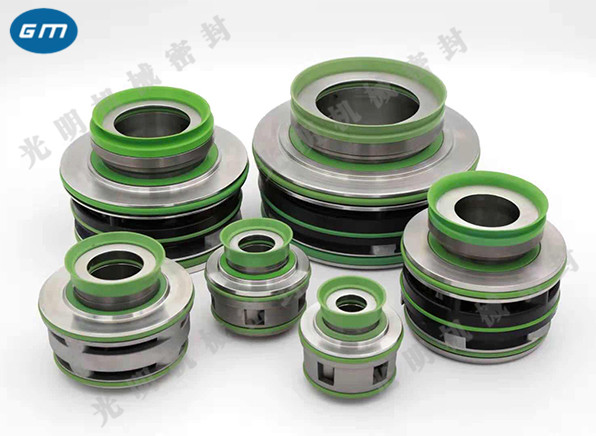Mechanical seal manufacturer Complete knowledge
Mechanical seal principle
Mechanical seal is a shaft seal device of rotating machinery. Such as centrifugal pumps, centrifuges, reaction kettles, compressors and other equipment. Since the transmission shaft runs through the inside and outside of the equipment, there is a circumferential gap between the shaft and the equipment through which the medium in the equipment leaks outward. If the pressure in the equipment is lower than the atmospheric pressure, the air leaks into the equipment. Therefore, there must be a shaft sealing device to prevent leakage. There are many kinds of shaft seals. Because mechanical seals have the advantages of less leakage and long life, mechanical seals are the most important shaft seals for these equipment in the world today. Mechanical seal, also called end face seal, is defined in the relevant national standards as "a device to prevent fluid leakage, which is composed of at least one pair of end faces perpendicular to the rotation axis, under the action of fluid pressure, elastic force (or magnetic force) of compensation mechanism, and the cooperation of auxiliary seal, to keep sticking and relative sliding."

Classification of mechanical seals
Mechanical seals have developed rapidly in recent years, and various structures have appeared according to different working conditions, but no matter which structure is composed of the following four parts:
The first part is the sealing end surface composed of moving ring and stationary ring, sometimes called friction pair.
The second part is a buffer compensation mechanism composed of elastic elements as the main parts, whose function is to make the seal face closely fit.
The third part is the auxiliary seal ring, including the moving ring and the stationary ring.
The fourth part is the transmission mechanism that makes the moving ring rotate with the shaft.
Mechanical seals are widely used in shaft seals of various rotating machines. The seals used are different under different working conditions. Mechanical seals can be divided into high-speed and ordinary mechanical seals according to service conditions; High pressure and low pressure mechanical seal; High temperature, normal temperature and low temperature mechanical seal; Pump, compressor and Mechanical seal for kettle And corrosion resistant mechanical seal and particle resistant mechanical seal. Generally, they are classified according to the structure and principle of mechanical seals, such as rotary and static mechanical seals; Internal and external mechanical seals; Balanced and unbalanced mechanical seals, etc.
According to the movement of elastic elements of compensation mechanism, it can be divided into rotary and static mechanical seals. The compensation mechanism rotating with the shaft is called rotary mechanical seal; The compensation mechanism that does not rotate (installed in the gland) is called static mechanical seal. When the compensation mechanism rotates, it is easy to produce mass imbalance and consume mixing power. Therefore, the rotary seal cannot be used for high-speed; Static seals can be used at high speeds. However, rotating seals are more convenient to install, so most common mechanical seals use rotating structures.











